An Electrical Installation Condition Report (EICR) tests the safety and condition of electrical systems within a property, ensuring they meet the minimum required standards for safe occupancy or rental.
Identifying fault codes is a significant aspect of an EICR, each indicating different levels of urgency and required actions. Let’s look at the different types of EICR codes:
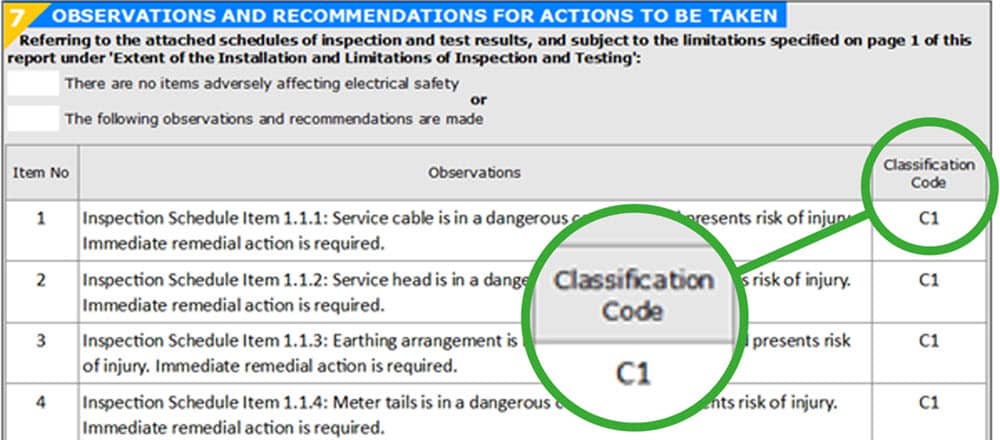
Understanding EICR C1 fault codes
A Code C1 signifies immediate danger, posing a risk of injury and requiring urgent remedial work. Some examples of C1 faults include exposed live parts and damaged wiring.
Immediate action is crucial to rectify these issues.
We have added a deeper explanation for those looking for more detailed info and examples of EICR C1 codes.
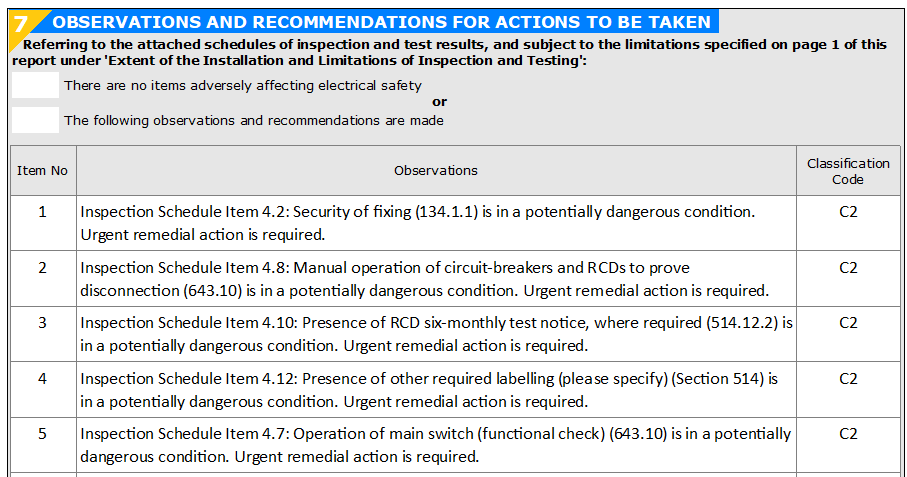
Understanding EICR C2 fault codes
A C2 EICR fault indicates a potentially dangerous electrical condition requiring urgent action but is not as immediately dangerous as a C1 fault. Examples include worn insulation and inadequate bonding.
Addressing C2 faults ensures the property remains safe and compliant.
See this page for more detail and examples of C2 fault codes.
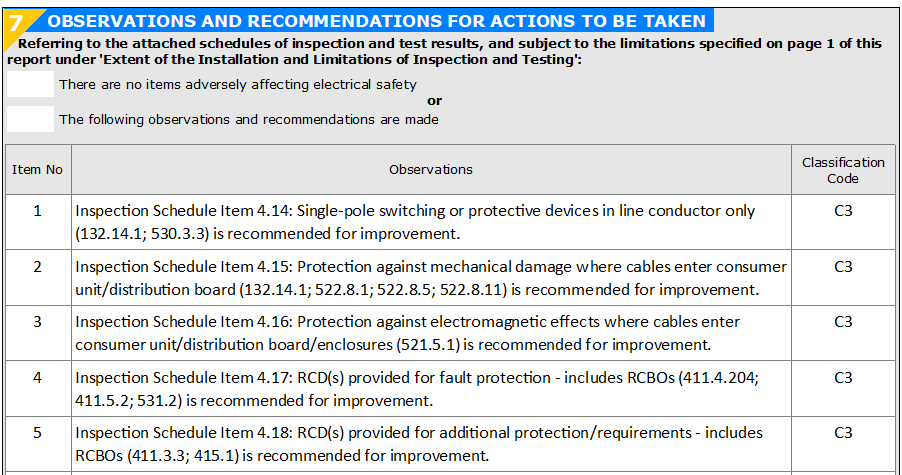
Understanding EICR C3 fault codes
A C3 EICR fault suggests conditions that do not meet current safety standards but are not immediately dangerous. Examples include the absence of RCD protection and older consumer units.
Addressing C3 faults enhances safety and compliance over time.
Here is more detailed information on C3 fault codes.
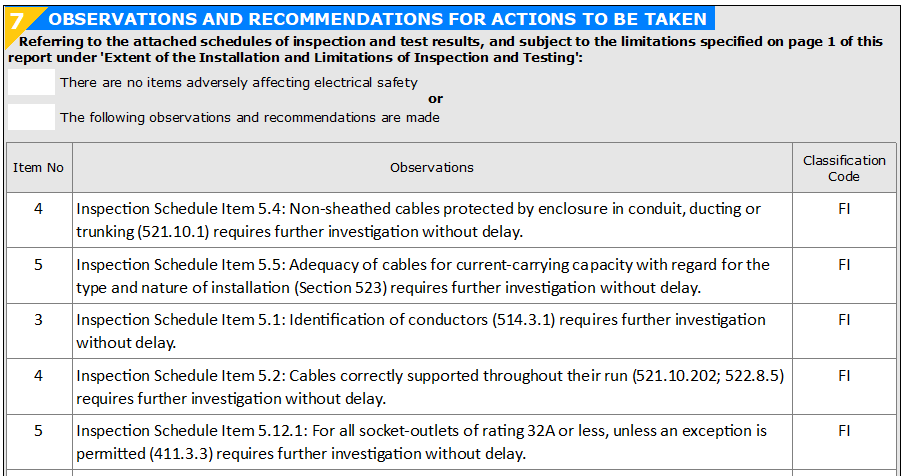
Understanding the EICR code for further investigation (FI)
A (FI) EICR code indicates the need for further investigation to confirm the safety of the electrical installation. This code is used when certain issues cannot be fully assessed during the initial electrical inspection. Examples include high resistance readings and unidentifiable components.
Addressing “FI codes” is crucial for a complete safety assessment.
See this page for detailed information on, and examples of, FI codes.
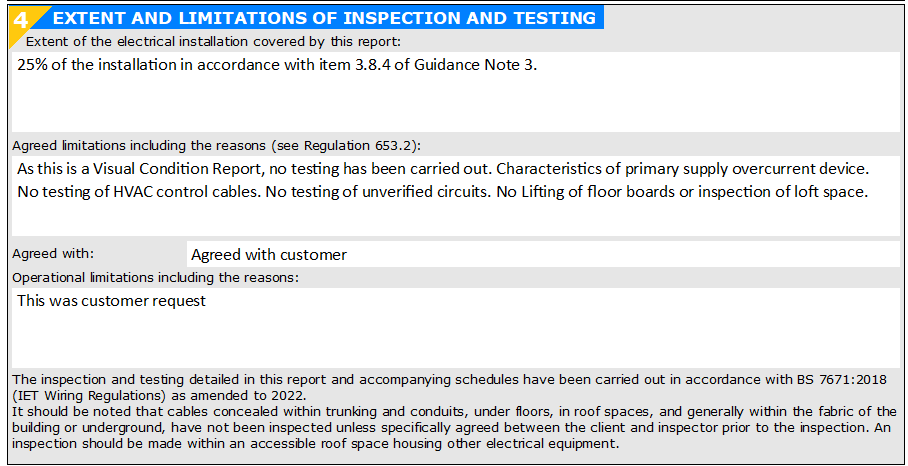
Understanding Limitations on an EICR
Often called ‘operational limitations’ or ‘agreed limitations’, limitations on an EICR refer to conditions that prevent a full assessment, such as inaccessible areas or concealed wiring. Recognising these limitations is crucial as they impact the inspection’s scope and depth.
Addressing these limitations helps ensure a full assessment of your electrical installation.
Landlord Tip – What fault codes on an EICR prevent a new tenancy?
Fault codes on an EICR that prevent landlord starting a new tenancy include:
- C1 (Immediate Danger): Indicates a serious risk that requires immediate remedial action. The presence of this code means the electrical installation poses an immediate threat to occupants and must be rectified before a new tenancy can begin.
- C2 (Potential Danger): Represents issues that are not immediately hazardous but require urgent attention. These must be addressed to ensure the property is safe for new tenants.
- FI (Further Investigation): Signifies that further investigation is necessary to ascertain the safety of the installation. This must be resolved to verify that there are no hidden dangers.
Summary
Addressing faults identified during an EICR is vital to ensure the safety of your electrical system and we hope you’ve found this introduction to EICR fault codes useful.
We are aiming to add other articles where we will look deeper at the intricacies of the EICR topic. Watch this space so to speak!
… and do get in touch if you’re a landlord or letting agent and would like to book an EICR test for your property.
If you have any questions or need a professional opinion, please feel free to contact us or leave a comment below.
All the best
Mark and the IES team

